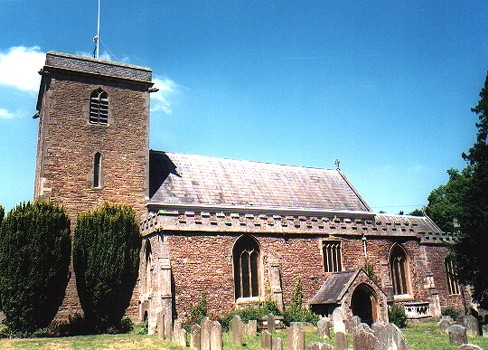
St
Mary, the Parish Church
of Henbury. The Parish was founded in 692AD when Ethelred, son of
King
Penda of Mercia, granted
the land to Oftor, Bishop of Worcester. The first evidence of a church
on
this site appears in
1093 though it may have been built much earlier. The present nave was
built
in
about 1175. The chancel,
which is out of alignment with the rest of the church, was originally
built
in
the early 13th century
but was rebuilt in 1270. The tower dates from the 16th and
17th centuries.
The
church
was substantially
altered in the 1830s by Rickman and Hutchinson but their work was
regarded
as
detrimental to the appearance
of the building and in 1874 George Street, whose work also included
Bristol
Cathedral, restored
much of the original design. A spire intended to rival that of St. Mary
Redcliffe
was
planned but never built.
The churchyard contains the grave of Scipio Africanus, an African slave
in
the
servitude of Charles
William Howard, 7th Earl of Suffolk and 2nd Earl of Bindon, who died on
21st
December
1720 aged 18. The
name Henbury comes from the Old English 'Heahburh' meaning
'high
fortified
place' which
may be a reference to the Iron Age hill fort in nearby Blaise Estate,
although
'high'
may relate to a chief
rather than a high place. The parish was part of Gloucestershire until
1935
when it became incorporated
into the City of Bristol, but Henbury remained a quiet country
village
until the 1950s
when modern development transformed it into a busy suburb.